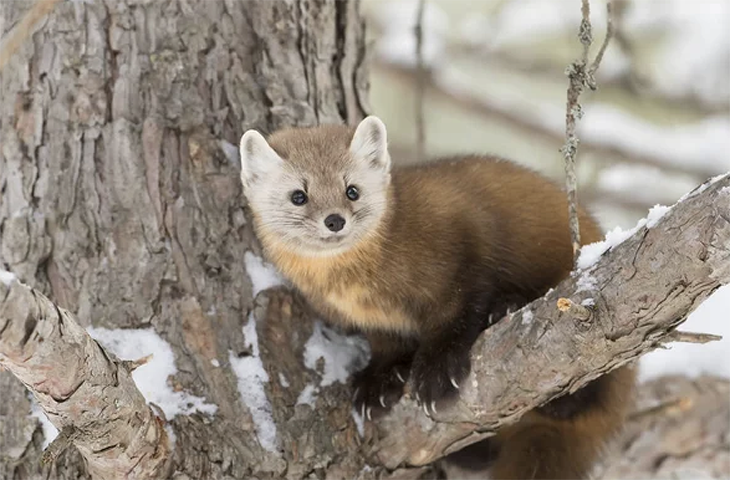
The Pennsylvania Bureau of Wildlife Management (BWF) is embarking on an ambitious endeavor: an experimental reintroduction plan aimed at restoring the American marten to the forests and hills of the Keystone State.
Once abundant in Pennsylvania, this tree-dwelling relative of the mink suffered eradication from the state a century ago due to various factors, including habitat loss and overhunting. Now, efforts are underway to reverse this loss and potentially reestablish a population of martens in the region.
The proposed plan involves creating an experimental, non-protected population of martens to closely monitor how the reintroduction of this predator might impact existing ecosystems in Pennsylvania. Scheduled for discussion in April, this initiative represents a concerted effort by wildlife authorities to restore a vital component of the state’s natural heritage.
The American marten, weighing between 1 and 3 pounds, is a versatile omnivore known to prey on a diverse range of food items, including insects, fish, plants, rodents, and more.
To better understand the dietary habits of martens and their potential impact on local fauna, the Pennsylvania Game Commission conducted extensive research as part of a Feasibility Assessment. This research revealed that martens primarily consume rodents across their range in other states.
However, despite such findings, concerns have been raised by some opponents of the reintroduction. These skeptics fear that reintroducing martens may lead to detrimental effects on populations of game species, such as grouse and wild turkey, or pose a threat to species listed as endangered or vulnerable, like the northern goshawk.
While these concerns are valid, the Feasibility Assessment did not identify species such as turkeys or the northern goshawk as prey items in the marten’s diet research.
The BWF remains steadfast in its belief that reintroducing martens to Pennsylvania will contribute to restoring ecological balance and enhancing biodiversity in the region. By reintroducing a species that once inhabited these landscapes, the BWF aims to revive essential ecological processes, including seed dispersal and rodent population management.
Despite the BWF’s optimism, public opinion on the reintroduction remains divided. According to a survey conducted in January by North Central PA, hunters expressed a variety of perspectives, with 37% in favor of the reintroduction, 32% opposed, and 31% remaining neutral.
Acknowledging the concerns voiced by those in opposition, the BWF seeks to address these apprehensions by providing additional information and reassurances ahead of the upcoming April meeting.
What are your thoughts? Please comment below and share this news!
True Activist / Report a typo


